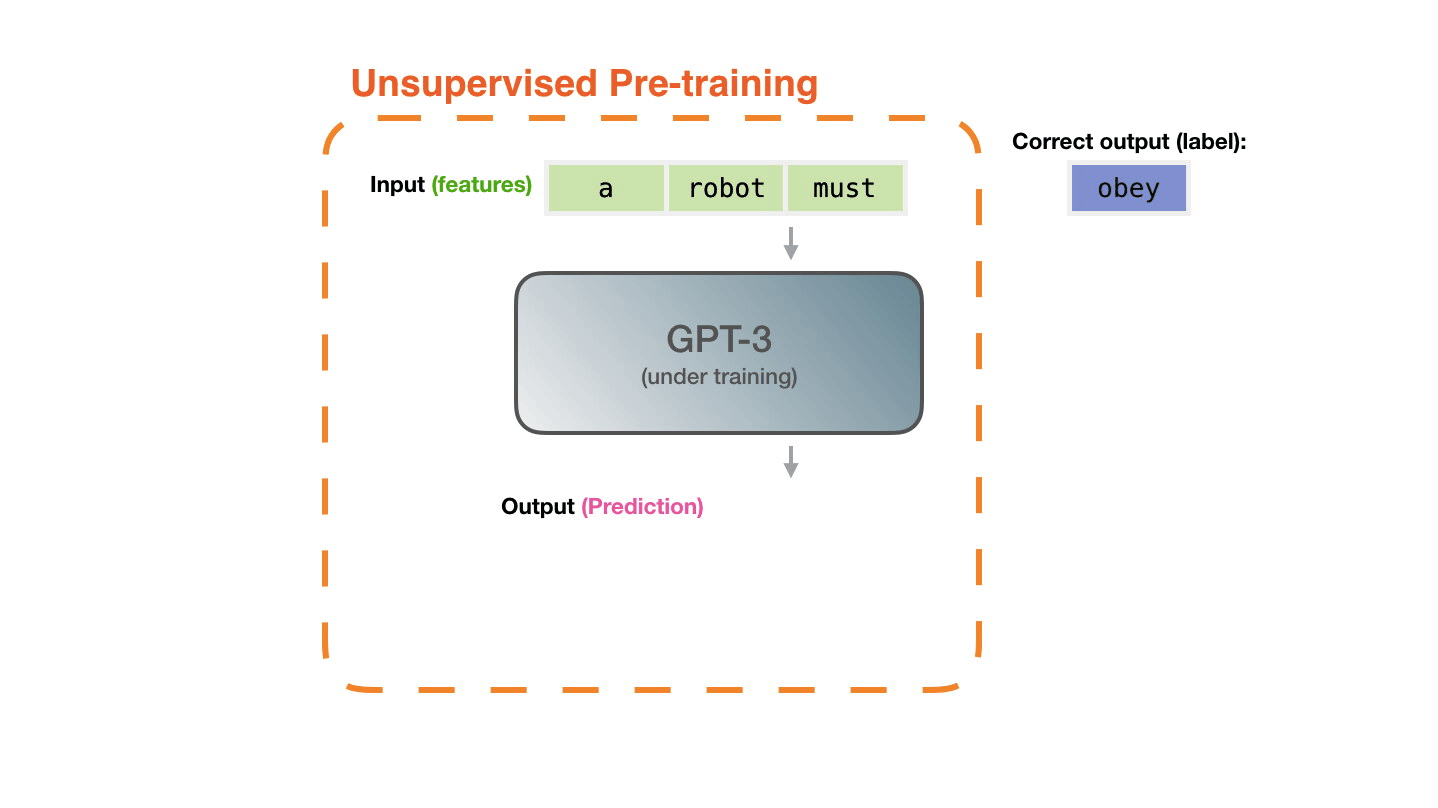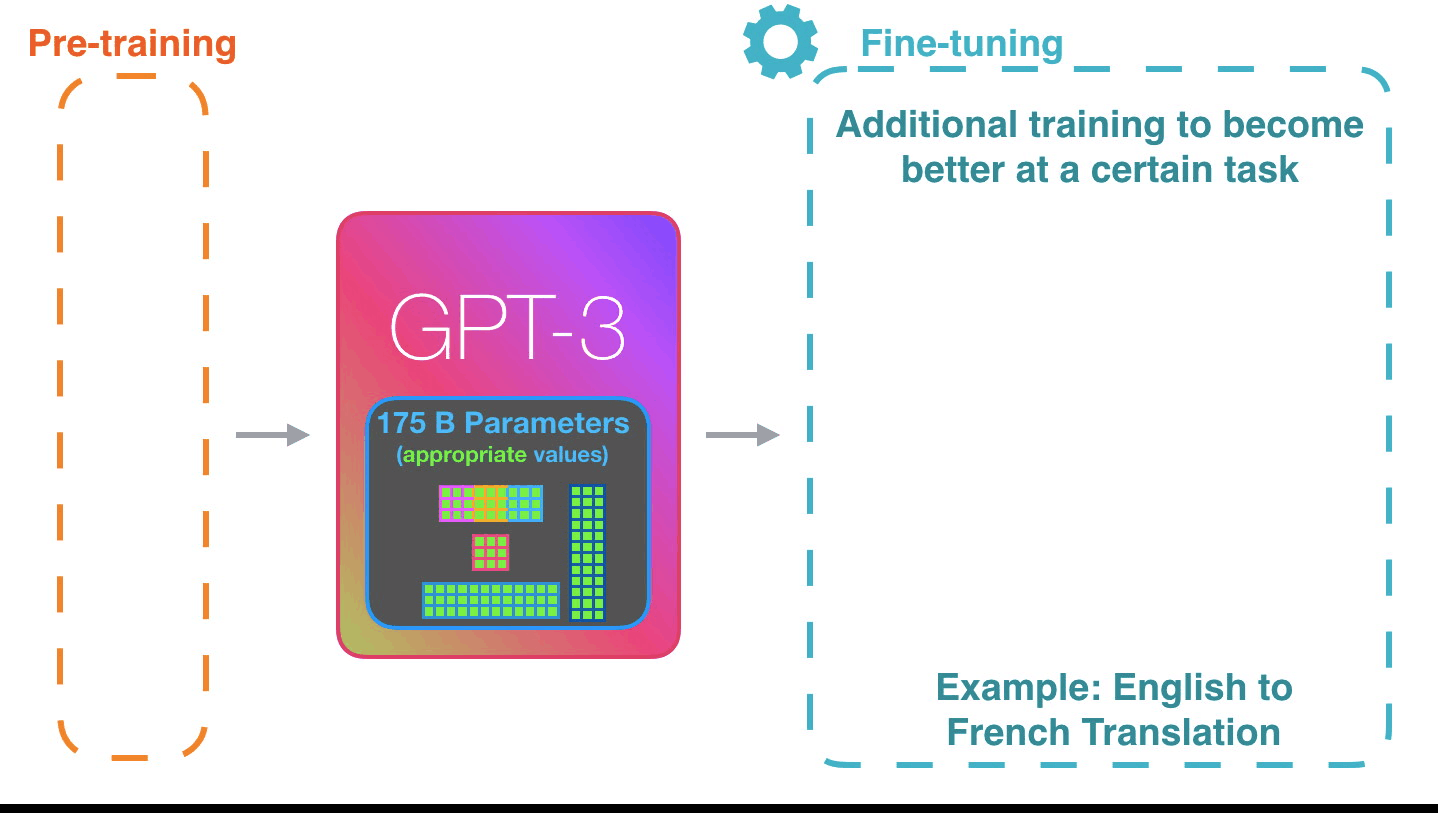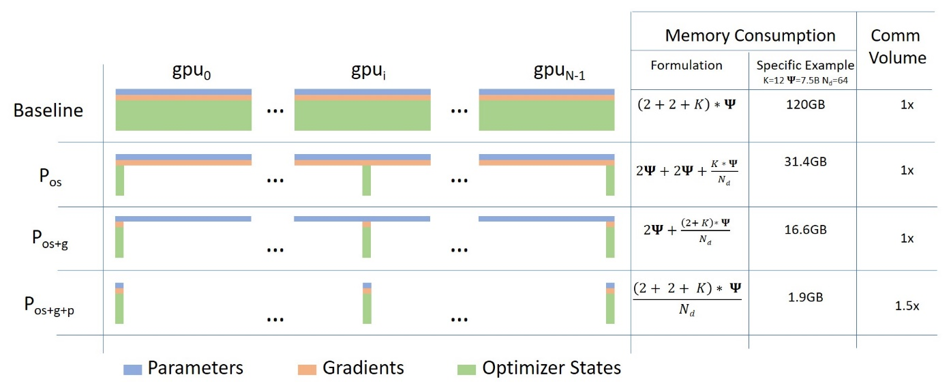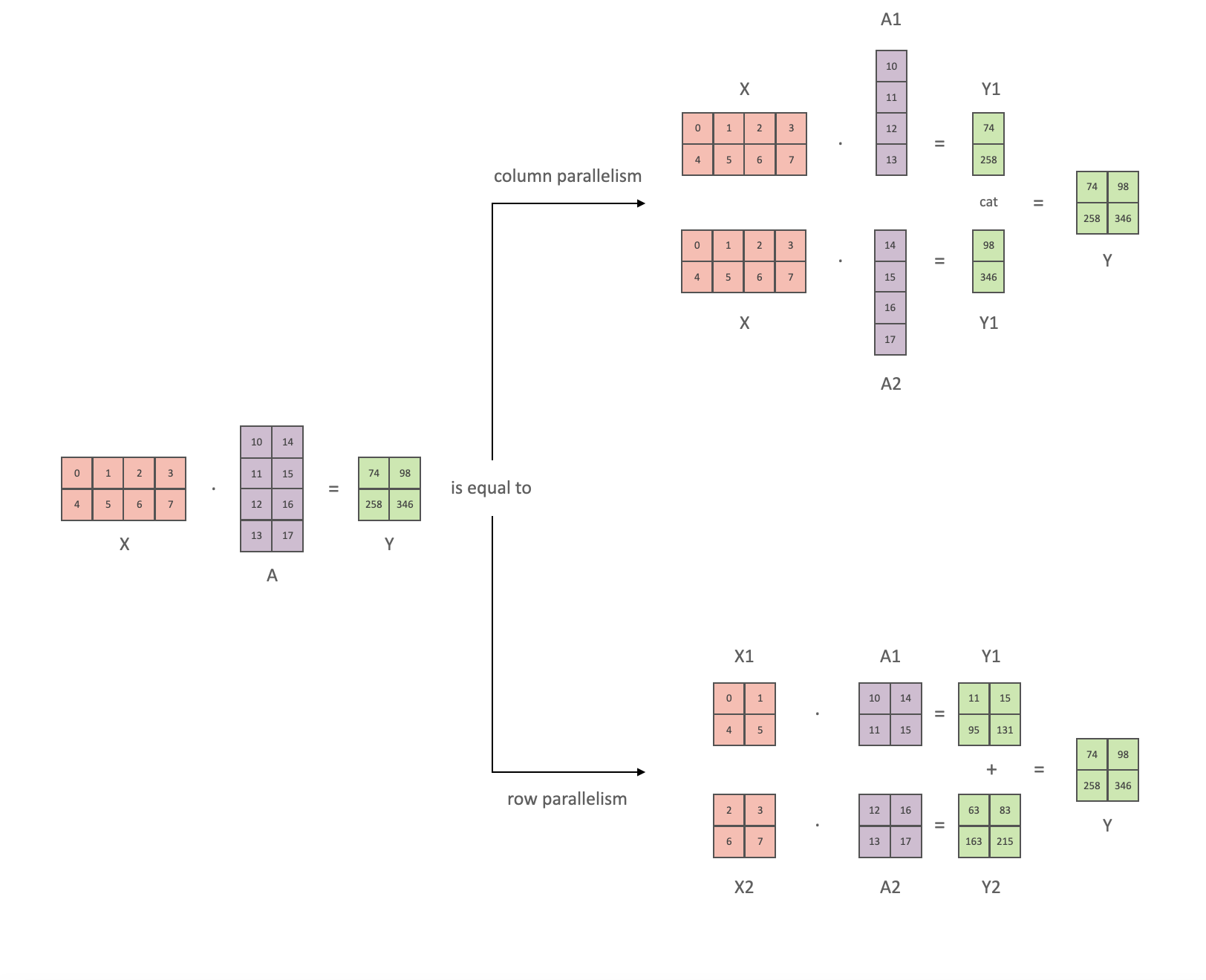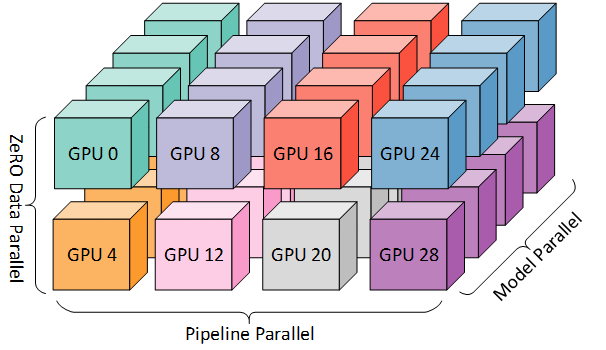Sam Foreman 2023-10-13
- I’m a Computational Scientist in the Data Science
Group at
ALCF1.
- Personal Website: samforeman.me
- Background:
{ML, LLMs, AI4Science, HEP, Lattice QCD, MCMC, Generative Modeling, ...}
Ongoing / recent work:
- Scaling Large Language Models
- Optimizing distibuted training across thousands of GPUs
- Building new parallelism techniques for efficient scaling
- Generative modeling (esp. for physical systems)
Status of Large Language Models2
Figure 1: Large Language Models have (LLM)s have taken the NLP
community world by storm3

Emergent abilities of Large Language Models Yao et al. (2023)
Recent Work
Table 1: Papers, 2017–*
|
Figure 3: Pre-training: Virtually all of the compute used during pretraining phase1. |
Figure from The Illustrated Transformer↩︎
Figure 5: Fine-tuning4: Fine-tuning actually updates the model’s weights to make the model better at a certain task.
Vaswani et al. (2017)
Figure 6: Language Model trained for causal language modeling. Video from: 🤗 Generation with LLMs
Figure 7: Language Model trained for causal language modeling. Video from: 🤗 Generation with LLMs
Modern parallelism techniques enable the training of large language models
Parallelism Concepts5
- DataParallel (DP):
-
The same setup is replicated multiple times, and each being fed a slice of the data.
-
The processing is done in parallel and all setups are synchronized at the end of each training step.
-
- TensorParallel (TP):
- Each tensor is split up into multiple chunks.
- So, instead of having the whole tensor reside on a single gpu, each
shard of the tensor resides on its designated gpu.
- During processing each shard gets processed separately and in parallel on different GPUs and the results are synced at the end of the step.
- This is what one may call horizontal parallelism, as he splitting happens on horizontal level.
Parallelism Concepts6
- PipelineParallel (PP):
- Model is split up vertically (layer-level) across multiple GPUs, so
that only one or several layers of the model are places on a single
gpu.
- Each gpu processes in parallel different stages of the pipeline and working on a small chunk of the batch.
- Model is split up vertically (layer-level) across multiple GPUs, so
that only one or several layers of the model are places on a single
gpu.
- Zero Redundancy Optimizer (ZeRO):
- Also performs sharding of the tensors somewhat similar to TP, except the whole tensor gets reconstructed in time for a forward or backward computation, therefore the model doesn’t need to be modified.
- It also supports various offloading techniques to compensate for limited GPU memory.
- Sharded DDP:
- Another name for the foundational ZeRO concept as used by various other implementations of ZeRO.
- Data Parallelism:
- The simplest and most common parallelism technique. Workers maintain identical copies of the complete model and work on a subset of the data.
DDPsupported in PyTorch native.
- ZeRO Data Parallel
- ZeRO powered data parallelism is shown below7
Tensor Parallelism8
-
In Tensor Paralleism each GPU processes only a slice of a tensor and only aggregates the full tensor for operations that require the whole thing.
-
The main building block of any transformer is a fully connected nn.Linear followed by a nonlinear activation GeLU.
Y = GeLU(XA), where X and Y are the input and output vectors, and A is the weight matrix.
-
If we look at the computation in matrix form, it’s easy to see how the matrix multiplication can be split between multiple GPUs:
-
This information is based on (the much more in-depth) TP Overview by @anton-l
DP+TP+PP(3D) Parallelism
3D Parallelism illustration. Figure from: https://www.deepspeed.ai/
DP+TP+PP(3D) Parallelism
Figure taken from 3D parallelism: Scaling to trillion-parameter models
-
We’ve provided a virtual environment complete with all dependencies for running
argonne-lcf/Megatron-DeepSpeed# navigate to directory --------------------------------------- WORKSHOP_DIR="/lus/grand/projects/fallwkshp23/" PROJECTS_DIR="${WORKSHOP_DIR}/foremans/projects" PROJECT_DIR="${PROJECTS_DIR}/argonne-lcf/Megatron-DeepSpeed" cd "${PROJECT_DIR}" # load conda module and activate venv ------------------------- module load conda/2023-10-04; conda activate base source venvs/polaris/2023-10-04/bin/activate # set runtime environment variables --------------------------- export IBV_FORK_SAFE=1 export CUDA_DEVICE_MAX_CONNECTIONS=1 # set environment variables for running ----------------------- SEQ_LEN=1024 MICRO_BATCH=1 SP_TYPE="megatron" MODEL_SIZE_KEY="GPT1_5B" # launch training -------------------------------------------- ./ALCF/train-gpt3.sh
-
Executable:
MODEL_SIZE_KEY="GPT1_5B" SEQ_LEN=1024 MICRO_BATCH=1 SP_TYPE="megatron" ./ALCF/train-gpt3.sh
Output
+-+-+-+-+-+-+-+-+-+-+-+-+-+-+-+-+-+-+-+-+-+-+-+-+
ALCF_DIR: /lus/grand/projects/fallwkshp23/foremans/locations/polaris/projects/argonne-lcf/Megatron-DeepSpeed/ALCF
+-+-+-+-+-+-+-+-+-+-+-+-+-+-+-+-+-+-+-+-+-+-+-+-+
source-ing /lus/grand/projects/fallwkshp23/foremans/locations/polaris/projects/argonne-lcf/Megatron-DeepSpeed/ALCF/setup.sh
Setting up MPI on Polaris from x3210c0s1b0n0
++ SetupMPI() +++++++++++++++++++++++++++++++++
Using HOSTFILE: /var/spool/pbs/aux/1126584.polaris-pbs-01.hsn.cm.polaris.alcf.anl.gov
NHOSTS: 2
NGPU_PER_HOST: 4
NGPUS: 8
+++++++++++++++++++++++++++++++++++++++++++++++
Skipping setupThetaGPU() on x3210c0s1b0n0
Setting up MPI on Polaris from x3210c0s1b0n0
USING PYTHON: /lus/grand/projects/fallwkshp23/foremans/locations/polaris/projects/argonne-lcf/Megatron-DeepSpeed/venvs/polaris/2023-10-04/bin/python3
[...]Once the text has finally stopped printing, you should see output similar to the following:
Job started at: 2023-10-11-092906 on x3210c0s1b0n0
[...]
Writing logs to: /lus/grand/projects/fallwkshp23/foremans/locations/polaris/projects/argonne-lcf/Megatron-DeepSpeed/outputs/gpt_SP_actCkpt_GPT13B_z1_seqlen1024_mp8_pp1_sp1_nl40_hs5120_gb1_mb1
to view output: tail -f $(tail -1 logfiles)
i.e. tail -f /lus/grand/projects/fallwkshp23/foremans/locations/polaris/projects/argonne-lcf/Megatron-DeepSpeed/outputs/gpt_SP_actCkpt_GPT13B_z1_seqlen1024_mp8_pp1_sp1_nl40_hs5120_gb1_mb1/logs/foremans-x3210c0s1b0n0-nhosts2-ngpu8-2023-10-11-092906.log-
To watch / view the output:
tail -fn 1000 $(tail -1 logfiles) | less
-
will look like9:
Job started at: 2023-10-11-092906 on x3210c0s1b0n0
Training GPT-3 with GPT13B parameters
Writing logs to: /lus/grand/projects/fallwkshp23/foremans/locations/polaris/projects/argonne-lcf/Megatron-DeepSpeed/outputs/gpt_SP_actCkpt_GPT13B_z1_seqlen1024_mp8_pp1_sp1_nl40_hs5120_gb1_mb1
to view output: tail -f $(tail -1 logfiles)
i.e. tail -f /lus/grand/projects/fallwkshp23/foremans/locations/polaris/projects/argonne-lcf/Megatron-DeepSpeed/outputs/gpt_SP_actCkpt_GPT13B_z1_seqlen1024_mp8_pp1_sp1_nl40_hs5120_gb1_mb1/logs/foremans-x3210c0s1b0n0-nhosts2-ngpu8-2023-10-11-092906.log
using: /lus/grand/projects/fallwkshp23/foremans/locations/polaris/projects/argonne-lcf/Megatron-DeepSpeed/venvs/polaris/2023-10-04/bin/python3
[...]-
We provide below the details for installing / getting started on ALCF (Polaris)
-
Installation:
- Clone GitHub repo:
git clone https://github.com/argonne-lcf/Megatron-DeepSpeed
- Load Conda module:
-
Polaris:
if [[ "$(hostname)==x3*" ]]; then export MACHINE="Polaris" export CONDA_DATE="2023-10-04" module load conda/${CONDA_DATE} conda activate base fi
-
ThetaGPU:
if [[ "$(hostname)==theta*" ]]; then export MACHINE="ThetaGPU" export CONDA_DATE="2023-01-10" module load conda/${CONDA_DATE} conda activate base fi
-
-
Setup virtual environment10:
cd Megatron-DeepSpeed # create a new virtual environment mkdir -p "venvs/${MACHINE}/${CONDA_DATE}" python3 -m venv "venvs/${MACHINE}/${CONDA_DATE}" --system-site-packages source "venvs/${MACHINE}/${CONDA_DATE}/bin/activate"
-
Create a new folder where we’ll install dependencies:
mkdir -p "deps/${MACHINE}" cd "deps/${MACHINE}"
**
conda/2023-10-04**Note: The following instructions should be unnecessary on Polaris.
-
The new release supports three different implementations of FlashAttention: (
v1.0.4,v2.x,triton) -
FlashAttention
v2.xmay have numerical instability issues. For the best performance, we recommend using FlashAttention + Triton -
-
v1.0.4:python3 -m pip install flash-attn==1.0.4
-
v2.x:git clone https://github.com/Dao-AILab/flash-attention cd flash-attention python3 setup.py install -
openai/triton:git clone -b legacy-backend https://github.com/openai/triton cd triton/python python3 -m pip install cmake pybind11 python3 -m pip install .
-
-
python3 -m pip install -e "git+https://github.com/saforem2/ezpz.git#egg=ezpz"
|
- The
ALCF/directory contains shell scripts for setting up the environment and specifying options to be used for training.
|
|
Explicitly:
-
ALCF/train-gpt3.sh: Main entry point for training. This script will:- Source the rest of the required
ALCF/*.shscripts below
- Source the rest of the required
-
ALCF/models.sh: Contains some example model architectures for GPT3-style models -
ALCF/args.sh: Logic for parsing / setting up runtime options for Megatron and DeepSpeed -
ALCF/setup.sh: Locate and activate virtual environment to be used, ensure MPI variables are set properly -
ALCF/launch.sh: Identify available resources and build the command to be executed- i.e. figure out how many:
{nodes, GPUs per node, GPUs total}, to pass tompi{run,exec} - then, use this to launch
mpiexec <mpiexec-args> python3pretrain_gpt.py<gpt-args>
- i.e. figure out how many:
| Sequence Length | Old Megatron-DeepSpeed (TFLOPS) | New Megatron-DeepSpeed (TFLOPS) |
|---|---|---|
| 2k | 25 | 68 |
| 4k | 28 | 80 |
| 8k | OOM | 86 |
| 16k | OOM | 92 |
| 32k | OOM | 100 |
| 64k | OOM | 106 |
| 128k | OOM | 119 |
| 256k | OOM | 94 |
Table 2: Long sequence length support from
microsoft/Megatron-DeepSpeed
- Working with Microsoft DeepSpeed team to enable longer sequence lengths (context windows) for LLMs11
- We can evaluate the performance of our model by looking at two
different metrics for throughput:
samples_per_secandTFLOPS.- Explicitly, we see that we are able to scale up to significantly
longer sequences:
(420k / 128k ~ 3.3x) with only a minimal impact on throughput
performance: (81 / 105 ~ 77%)12.
- Explicitly, we see that we are able to scale up to significantly
longer sequences:
| Name | Sequence Length (k) | (seq_len / min_seq_len) |
TFLOPS | TFLOPS (% of peak) |
|---|---|---|---|---|
| GPT25B | 420 | 3.28125 | 81.77225 | 77.867 |
| GPT25B | 400 | 3.125 | 90.62 | 86.297 |
| GPT25B | 360 | 2.8125 | 81.6325 | 77.7348 |
| GPT25B | 360 | 2.8125 | 82.6824 | 78.7346 |
| GPT25B | 192 | 1.5 | 115.8228 | 110.2927 |
| GPT25B | 128 | 1 | 106.672 | 101.5788 |
| GPT25B | 128 | 1 | 105.014 | 100.00 |
Table 3: Impact on TFLOPS as a function of increasing sequence length.
Table from:
throughput/TFLOPS
-
Hannibal046/Awesome-LLM
- Mooler0410/LLMsPracticalGuide
- Large Language Models (in 2023)
- The Illustrated Transformer
- Generative AI Exists because of the Transformer
- GPT in 60 Lines of Numpy
- Better Language Models and their Implications
- Progress / Artefacts / Outcomes from 🌸 Bloom BigScience
Acknowledgements
This research used resources of the Argonne Leadership Computing Facility,
which is a DOE Office of Science User Facility supported under Contract DE-AC02-06CH11357.
Vaswani, Ashish, Noam Shazeer, Niki Parmar, Jakob Uszkoreit, Llion Jones, Aidan N. Gomez, Lukasz Kaiser, and Illia Polosukhin. 2017. “Attention Is All You Need.” https://arxiv.org/abs/1706.03762.
Yang, Jingfeng, Hongye Jin, Ruixiang Tang, Xiaotian Han, Qizhang Feng, Haoming Jiang, Bing Yin, and Xia Hu. 2023. “Harnessing the Power of LLMs in Practice: A Survey on ChatGPT and Beyond.” https://arxiv.org/abs/2304.13712.
Yao, Shunyu, Dian Yu, Jeffrey Zhao, Izhak Shafran, Thomas L. Griffiths, Yuan Cao, and Karthik Narasimhan. 2023. “Tree of Thoughts: Deliberate Problem Solving with Large Language Models.” https://arxiv.org/abs/2305.10601.
Footnotes
-
Mostly getting supercomputers to stop yelling at each other ↩
-
Figure from The Illustrated Transformer ↩
-
Efficient Large-Scale Language Model Training on GPU Clusters ↩
-
On-top of the base
condaenvironment (--system-site-packages) ↩ -
The described experiments were performed on 4 NVIDIA DGX A100-40GB nodes, all using TPSIZE=32[^tpsize], connected through 8 HDR InfiniBand (200Gb/s per HDR).↩︎ ↩



















































